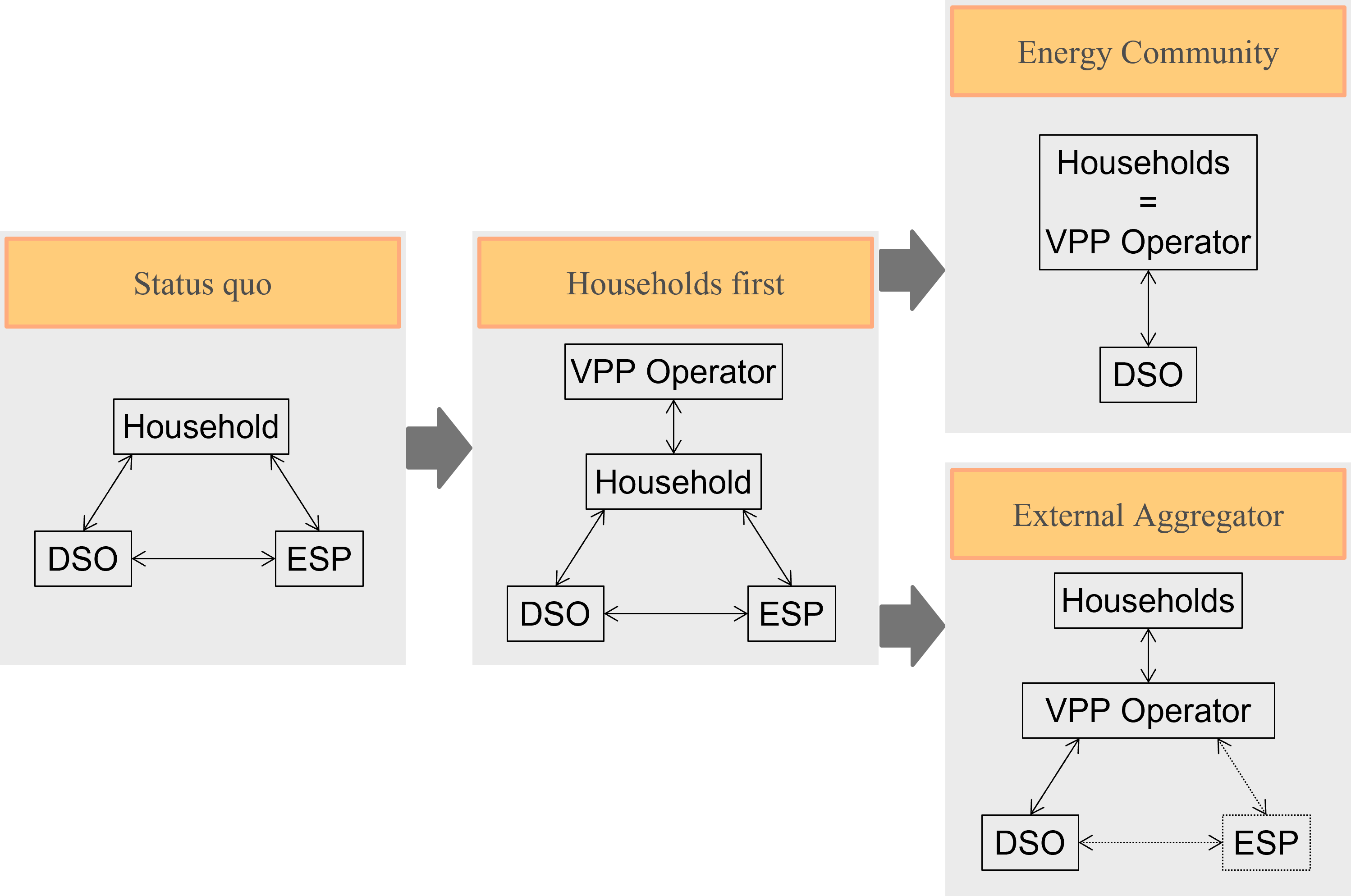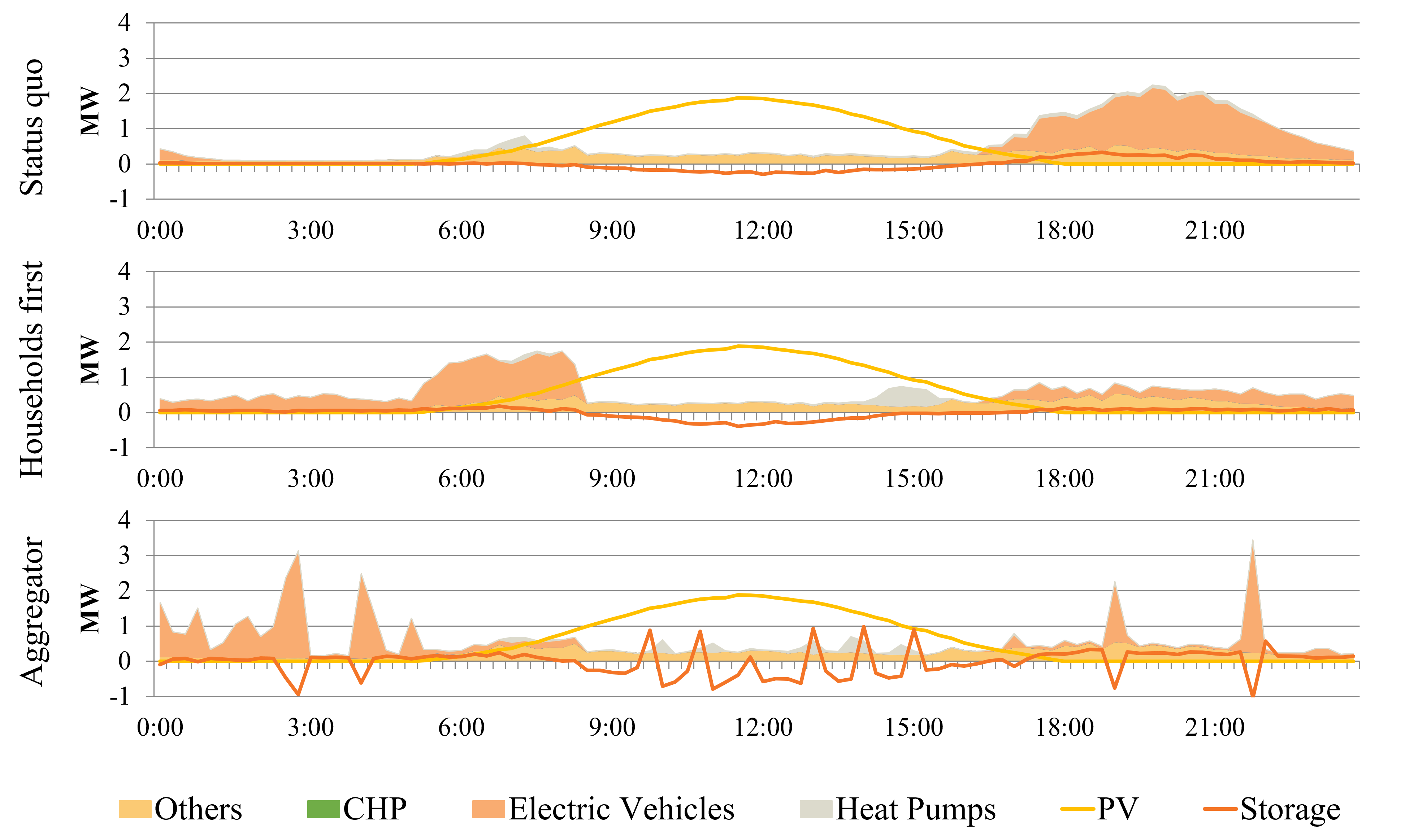
The energy transition is not only being made in the large power plants: green electricity and renewable heat are also produced by many small plants around residential buildings. These include, for example, photovoltaic systems on roofs or mini combined heat and power (mini-CHP) plants. Together with so-called flexible consumers, for example heat pumps and electric vehicles, as well as home storage systems, households are becoming their own small energy centres. Thanks to their flexibility, they can feed electricity into the grid or take it from the grid quickly and in a targeted manner if controlled appropriately.
For private households, it can be worthwhile to have these systems and consumers marketed by regional virtual power plants (VPPs). Whether the operation of regional VPPs is economical, however, depends on how prices on the energy markets and the costs of the required steering infrastructure develop. This is the conclusion reached by researchers from the University of Münster, the TH Köln – University of Applied Sciences, the Jülich Research Centre, the Wuppertal Institute and the Institute of Energy Economics (EWI) at the University of Cologne in the final report of the multidisciplinary project “Regional Virtual Power Plants” of the “Virtual Institute Smart Energy” (VISE).
Regional virtual power plants bundle flexible plants from households in a locally limited space, for example in a distribution grid, and market them on electricity markets. In the best case, they enable the active participation of households in the energy system by reducing the costs of energy supply for households and at the same time integrating the volatile RES generation of private plants into the energy system in the best possible way through flexible consumption. They can also take grid restrictions into account. In this way, they can make a significant contribution to the success of the energy, heat and mobility transition.
While many large decentralised plants (more than 100 kW installed capacity) are already marketed on forward, spot and balancing power markets, similar concepts for smaller plants have hardly been observed in practice so far. Within the framework of the project, the researchers therefore defined different concepts for the integration of small decentralised plants and investigated their systemic implications.

Starting from the status quo – in which households are largely supplied with electricity by energy suppliers, RES generation surpluses are handed over to the distribution grid operator and consumption processes are not optimised – three further business models are defined in the final report:
The results show that the concepts “households first” and “external aggregator” are economically attractive/advantageous for households compared to the status quo, as the costs of their own electricity and heat supply can be reduced through additional revenues. However, whether the aggregation concepts are also economically viable after deducting all associated costs depends on how prices develop on the energy markets. In order to operate the VPP, for example, the distribution grids would have to be digitalised and steering equipment would have to be installed in the individual households. In addition, it can be assumed that the transaction costs would be very high in total, because the individual needs of the individual households would have to be taken into account.

In addition, it can be observed that the marketing of flexibilities optimised exclusively to energy market prices, neglecting grid restrictions, can lead to more grid congestion and peak loads in the distribution grid. Figure 2 shows, for example, the emergence of load peaks in the business model of the external aggregator. They result from herd behaviour in response to low electricity prices at certain points in time.
For the investigations, the researchers configured a synthetic electricity distribution grid with households and the anticipated penetration of PV systems, home storage systems, heat pumps and electric vehicles for the year 2030. To simulate the different business models, the EWI then further developed its EASE model, a power plant dispatch model, to model a large number of households at different grid nodes with decentralised consumption, storage and generation facilities. In different configurations, the operation of the various facilities and the coverage of the households’ energy demand were analysed under the defined business models. The operational planning of the different plants was then input for a model of the TH Köln for load flow calculation. This was used to investigate the effects of the different plant deployment on the infrastructure of a synthetic grid.
The identified business models are already feasible from a technical point of view. However, regulatory hurdles stand in their way. For example, the plants would have to be exempted from fees and surcharges if they are operated in a way that serves the grid and the system. Furthermore, (market) mechanisms for the marketing and procurement of regional flexibility would have to be implemented to avoid grid bottlenecks. An important building block for this would be the amendment of German law §14a EnWG, which regulates the integration of controllable consumption devices at the low-voltage level.